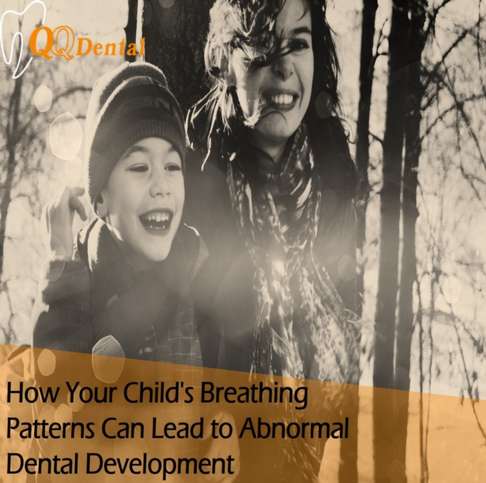
While it is best practice to regularly schedule an appointment at a dental office in Toronto for yourself and your child, we rarely stop to ponder why severity in dental procedures can vary so wildly between groups of children. In other words, how do we diagnose aberrant dental formation?
A study published by Basheer et al. (2014) in the Journal of International Oral Health has shed light on how breathing patterns may be symptomatic of misaligned teeth within growing children.
For today’s piece, we will be discussing the results gathered from this fascinating study; hopefully providing you with a new perspective upon your next visit to a dental office in Toronto.
Different Types of Breathing Habits
Under normal physiological circumstances, humans are designed to breathe through their nose. This, however, is not always the case for a variety of reasons, be it genetic factors, acclimatisation to bad habits, and/or obstructions that may occur in the respiratory pathway due to infection or allergy.
Children that augment their nasal breathing through their mouth, for any of the reasons listed above, are diagnosed with mouth-breathing syndrome (MBS).
The problems associated with MBS
A simple shift in your predominant respiratory pathway can have long lasting implications, ranging from more subtle cosmetic conditions, such as an elongation of the face, to more serious skeletal deformations.
MBS has been found to play a key role in contributing to muscular and postural deficiencies seen throughout the bones in the skull. This is because the forces that are normally exerted by the lips, cheek, and tongue can be significantly impaired which can ultimately lead to dental abnormalities, especially throughout childhood development - which is why we recommend you sign your child up to a dental office in Toronto.
How Was the Study Conducted?
Fifty children were asked to partake in the study, from which they sub-categorised into three groups:
Group 1 – Twenty mouth-breathing children with inflamed respiratory pathways.
Group 2 – Twenty mouth-breathing children without inflamed respiratory pathways.
Group 3 – Ten children demonstrating normal nasal breathing patterns.
Each of children in these groups then underwent a series of cephalograms – an X-ray of the bones housed within the skull and face – taken from their side profile.
It is important to note that variables accounting for children who demonstrated previous exposure to oral, dental, and nasal treatments were controlled for and not asked to participate in the study.
What the Results Showed
With regards to the formation of teeth, the study found, with strong statistical significance (P<0.05), that both mouth-breathing groups exhibited malformed development of their lower incisors, showing a higher degree of forward incline which was accentuated in children with inflamed pathways (Group 1). These results are representative of abnormal dental development within those diagnosed with MBS.
This can be problematic not only for cosmetic reasons, but also because associative tendencies between gingival recession and development of incisor proclination are known to occur. Get in touch with a dental office in Toronto for a consultation if you are concerned with your child’s dental development.
If you’re looking for a dental clinic centred around child care, cosmetic dentistry, or preventative care, then sign up for our dental office in Toronto. We at QQ Dental have a long history for providing the best services to our patients, who are always our top priority.
Our dental office in Toronto takes pride in letting your costs stay transparent throughout the whole process, breaking down your bill in a way that you’re satisfied with. Schedule an appointment with us and experience a dental service on the frontier of treatment!
Reference
Basheer, Bahija, K Sundeep Hegde, Sham S Bhat, Dilshad Umar, and Kusai Baroudi. 2014. “Influence of Mouth Breathing on the Dentofacial Growth of Children: A Cephalometric Study.” Journal of International Oral Health : JIOH 6 (6): 50–55. https://www.ncbi.nlm.nih.gov/pubmed/25628484.
ANNOUNCEMENT
The Canadian Dental Care Plan (CDCP) is now available for all age groups who meet the Government of Canada’s eligibility criteria — and we’re proud to announce that our clinic is now accepting CDCP coverage!
✅ If you qualify, you may receive free or low-cost dental care.
https://www.canada.ca/en/services/benefits/dental/dental-care-plan/apply.html
Sincerely,
The Team at Queens Quay Dental Centre




